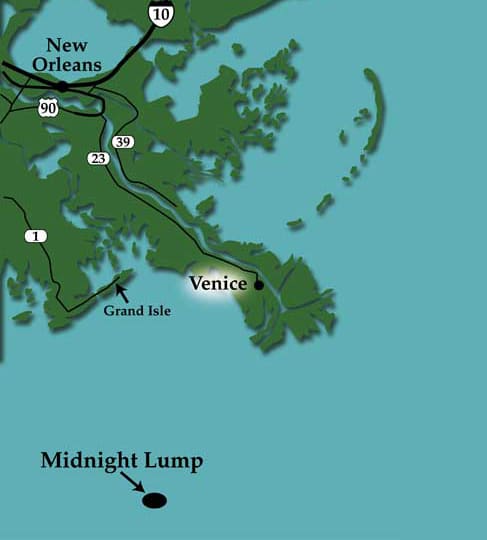
midnight lump blog
They rise majestically from the bottom like mountain ranges found in the continental US. However, these “mountains” aren’t found on dry land — they’re found in the depths of the Gulf of Mexico.
There are some 500-plus salt domes scattered throughout the Gulf. It is hypothesized these geological formations were created as the Gulf separated from the Atlantic millions of years ago. Archeological and geological artifacts have revealed that as the waters evaporated, the heavier salt sank to the bottom forming thick salt belts and deposited into these salt domes.
Salt domes can be several thousand feet tall and cover several square miles. The most well-known salt dome is the “Midnight Lump.” The expansive dome sprawls over roughly two square miles and is located 18 miles south of the Mississippi River mouth and five miles north of the Mississippi Canyon.
Salt domes offer some of the best winter action available. The Midnight Lump, for instance, has produced multiple record-book fish, including a yellowfin tuna (240.19 pounds in 2005), blackfin tuna (37.6 pounds in 2001) and the largest game fish ever landed in the Gulf of Mexico — an 1,152 pound bluefin tuna — in 2003. So when searching for cold weather action, never pass on the salt.

Multibeam bathymetry data showing DeSoto Canyon (right) and Salt Domes (middle) in the Northern Gulf of Mexico. EM302 bathymetry data acquired by NOAA Ship Okeanos Explorer during five cruises in 2011 and 2012. Image courtesy of NOAA Okeanos Explorer Program.









